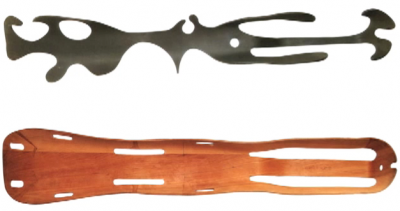Last month TED posted a video of Tim Brown’s presentation on the link between creativity and play.
The approach he pictures seems very important to me and the problems he explains I experienced before. With my thesis project - as I intended to do a work that needs to include play as a decisive part of the process I put myself in a somehow vulnerable position because play and imperfectness tend to be seen as the contrary to profession. And in most schools, businesses and graphic design platforms profession gains the most respect…
Tim Brown says the reason because many adults can’t be playful easily is the fear of failure or bad critique. Compared to children grown-ups loose the freedom and trust in their environment and tend to conservative thinking. But designers need to play and therefore to take risks. So this makes it very important for them to act in an environment they can trust. Playfulness is important because it eases the process to come up with creative ideas, it opens opportunities and supports productivity. There are three main categories of play: exploration, construction play and role play.
Exploration is about quantity. A classic example is to look for as many usages for a paper-clip as possible. It is about forgetting the original goal but exploring what is interesting for one. But as this behavior is against adult habits we have to relearn openness and playfulness and it does not make sense to introduce rules to break the rules such as brainstorming guides. Experiments explore possibilities and also physical objects.
Construction- or building-play means thinking with ones hands and is very effective and useful for production stages like rapid prototyping. It helps to communicate about a specific product or such when you have a dummy to talk about even when its just taped together from random things from around the work-space. Here it becomes obvious that another obstacle for adults remaining playful is that all kind of ‘play-tools’ get lost in schools with each level of school.
Role acting is another way to experience your environment and one can simulate case studies or play through scenarios.
Adults are very reluctant to engage though. This is partly embarrassment again or they don’t believe that what emerges is necessarily valid. The social scripts kids follow in role plays show that it is worth taking serious and adults experienced many situations throughout their lives so that they have a huge set of role play scripts already internalized - so we are very good in acting out an solution. Another aspect is that it facilitates to imagine a specific surrounding one is designing for. Besides simulation you could do role play in the real world as well. By documenting an experience you are going through even unintended emphasis happens on specific aspects you might have not noticed before.
Eventually Tim Brown stresses a few points about play:
Play is not anarchy. (Play has rules, especially group play)
There are rules about when to play. (There should be transitions between experiences)
In design one goes through two distinctive modes of operation - the generative mode and the creative mode (exploring and creating)
You can be playful and professional/serious at once
